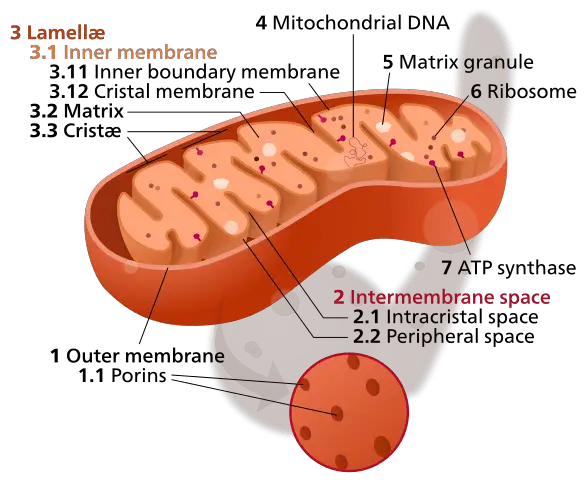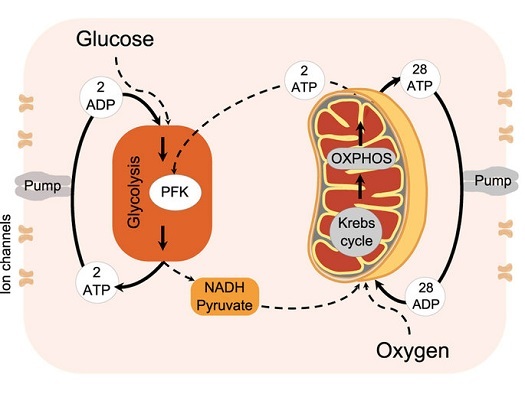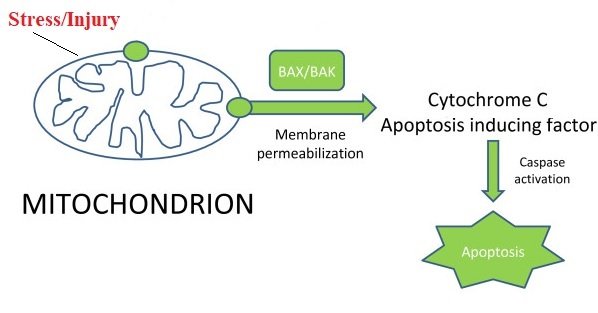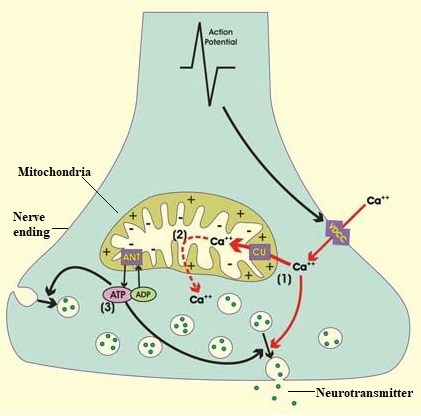Mitochondria is one of the vital cell organelles present inside the cell. An eukaryotic cell has at least one or more mitochondria, depending on the requirement.
But, those cells with high physiological activity possess a higher number of mitochondria. For example, muscle cells and nerve cells have a large number of them per cell. The functions of mitochondria include
- Cellular respiration
- Cellular energy production
- Calcium homeostasis
- Cell growth
- Cell death
- Oxidative radical regulation
- Nerve conduction
- Synthesis of bio-molecules
- Role in disease
- Metabolism
Similarly, those organs with low physiological activity have less number of mitochondria.
Further, in a typical cell, their location varies within the cytoplasm.
However, in most cells, they are concentrated within the regions of high physiological activity.
Structure and Function of Mitochondria
The Mitochondria structure is quite compact, and all of its functions happen within this structure.
Structure of mitochondria

They are sac-like double membrane structures present in the cytoplasm of the cell.
They can be seen only under an electron microscope.
Their shape differs from being either spherical, club, oval, or even thread-like structures.
They are divided into two compartments, i.e., an inner compartment and an outer compartment.
The inner compartment lies within the inner membrane. The outer compartment is in between the outer membrane and the inner membrane.
The inner compartment is also called a matrix and is surrounded by an inner mitochondrial membrane. This membrane is divided into several folds, within which lies the matrix. The mitochondrial membrane also has permeability. Hence, the substances can move from the matrix into the outer compartment and vice-versa.
The folding on the inner membrane is termed cristae, which have elementary particles and some enzymes.
The enzymes on cristae and those in the matrix are involved in the production of energy through the breakdown of carbohydrates.

Even fats and proteins are converted to some form of carbohydrates in mitochondria. Even the single-stranded DNA lies in the matrix.
The outer compartment is surrounded by the outer mitochondrial membrane towards the exterior and also by the inner mitochondrial membrane towards the interiors of mitochondria.
This outer mitochondrial membrane is smooth without any folding or projections. It is selectively permeable to substances. That is, a substance can move from the cytoplasm into the mitochondria and also from the mitochondria back into the cytoplasm.
Thus, it can act as a reserve for various substances needed for mitochondrial energy generation.
Check out →Mitochondrial characteristics
Functions of Mitochondria
1. Cellular respiration
It is a well-known fact that mitochondria are responsible for cellular respiration. The oxygen from the lungs is transferred by blood to the cells.
In the cells, this oxygen is utilized by mitochondria, and then carbon dioxide is released.
This carbon dioxide is again carried back to the lungs for expulsion from the body.

The cell requires energy for many purposes like DNA, RNA, protein synthesis, cell division, etc.
Most of the processes occur due to bond formations or with the involvement of enzymes and phosphate.
These enzymes and phosphorylations are energy-dependent. Mitochondria supply the required energy to the cell.
2. Cellular energy production
Mitochondria produce the energy as ATP (adenosine triphosphate) by oxidative phosphorylation.
This comes from the breakdown of carbohydrate substrates in the presence of oxygen.
Once we consume food, it is digested and absorbed into the blood as glucose.
This is supplied to each and every cell and organ in the body. The glucose is then broken down to release the energy.
This is how the food in the body is converted to energy.
Check out How food is converted to energy in the body.
3. Calcium homeostasis
Mitochondria are involved in calcium homeostasis inside the cell. Calcium is taken into the cell from outside through the cell membrane.
This calcium is stored in calcium vesicles inside the cell.
But when required, calcium is released and again stored in the vesicles.

However, mitochondria also take up calcium and release it back into the cytoplasm. Read for more on mitochondria and calcium.
4. Promote cell growth and multiplication
Mitochondria are required for cell growth and multiplication.
They form a network of tubules to enhance protein synthesis. Specifically, a protein called cyclin is formed, which acts as a checkpoint protein.
Its role is to ensure the cell undergoes division at the right time when all the aspects are ready for the process.
5. Role in cell death
Mitochondria are also responsible for programmed cell death. This is called apoptotic cell death.
It occurs mostly in conditions of injury or irreversible damage to the cell.
The membrane of mitochondria releases caspases, which are apoptosis factors.

Further, disruption of mitochondria function can lead to sudden stoppage of energy supply, leading to shock and immediate death.
6. Oxidative radicals
They also generate oxidative radicals during energy formation.
These oxidative radicals are necessary for various other reactions.
However, these oxidative radicals contribute to aging.
Interestingly, other enzymes of the cell and mitochondria destroy these oxidative radicals.
7. Support nerve conduction
Mitochondria support nerve conduction by helping neurotransmitter release.

In a typical nerve, you will notice that most mitochondria are concentrated near the nerve endings (the synapse).
These mitochondria produce sufficient energy in the form of APT.
Further, they also release calcium into the cytoplasm for the release of neurotransmitters at the nerve junctions.
8. Organs of metabolism
These are the cell organelles where the citric acid cycle or TCA cycle (tricarboxylic acid cycle) and other respiratory cycles of the cell take place.
9. Synthesize bio-molecules
Many bi-products like glutarate glycol-oxalic acid are produced during the TCA cycle chemical reactions.
These bi-products are further utilized by the cell. They form glutamine, glycine-like amino acids, which are essential for normal physiology.
10. Contribute to diseases
Abnormalities in mitochondria can lead to many diseases like mood disorders, neurodegeneration, cardiac problems, cancer, etc.
Very interesting and I found it very educational
Wow thanks for the information,it exactly what i needed.i appreciate.
Great information. I wish I had learned or even heard about this process in our bodies when I was younger, but it’s never too late to provide better for myself. Blessings and many long years ahead.
82 years young and still doing my exercise two to three times a week.
Wow ! Great information on mitochondrial function
This was a great help..exactly what i needed, correct straight answers to the point.
Thank you very much..keep up the good work and be of great help always.